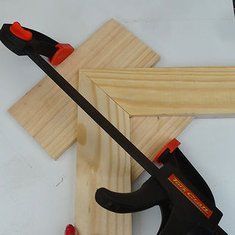Thinking of starting a woodworking business but not sure how much money you need to get started? In this article, we will dive into the essential aspects of launching a woodworking business and provide a breakdown of the startup costs involved. Understanding the financial requirements is crucial for anyone looking to venture into this industry.
The first step in starting any business is to have a clear understanding of what it entails. A woodworking business involves the creation and sale of wood products such as furniture, cabinets, and decorative items. It can also include services like custom woodworking and carpentry. In addition to honing your woodworking skills, it is equally important to have a good grasp of the financial aspect of running a woodworking business.
Before you dive in, conducting thorough market research is essential. Identifying your target market, analyzing demand and competition will give you valuable insights into the viability of your woodworking business. This will ultimately help you make informed decisions about your startup costs and pricing strategy.
Market Research and Analysis
Before diving into the financial aspect of starting a woodworking business, it is crucial to conduct thorough market research and analysis. This step is essential in identifying the target market for woodworking products and understanding the demand and competition in the industry. By gaining insights into consumer preferences, as well as studying the strategies of competitors, aspiring woodworking entrepreneurs can make informed decisions about their business.
Understanding the market for woodworking products involves examining factors such as consumer behavior, trends in design and craftsmanship, and potential niches within the industry. Additionally, analyzing the competition can provide valuable information about pricing strategies, product quality, and areas where the market may be underserved. This knowledge can guide entrepreneurs on how to position their woodworking business effectively in the market.
By conducting comprehensive market research and analysis, aspiring woodworking business owners can gain a clear understanding of how much money to start a woodworking business based on their specific target market and industry dynamics. This information will ultimately inform financial decisions related to startup costs, pricing strategies, and overall budgeting for the business.
Startup Costs Breakdown
Starting a woodworking business requires careful consideration of the startup costs involved. Here is a breakdown of the expenses to consider and plan for when launching your own woodworking venture:
- Cost of tools and equipment: Purchasing high-quality woodworking tools and machines is essential for producing top-notch products. These may include saws, drills, sanders, and carving tools.
- Expenses for raw materials and supplies: Wood, finishing materials, adhesives, and other consumables are required to create your woodworking products.
- Insurance and legal fees: Obtaining insurance coverage for your business as well as legal fees for registering your business structure are crucial in protecting your investment.
- Costs for setting up a workshop or storefront: Renting or purchasing a space for your woodworking operations should also be factored into your budget.
It’s important to carefully assess how much money you will need to start a woodworking business. Researching the specific costs in your area, obtaining quotes from suppliers, and creating a detailed budget will help you understand the financial requirements of starting a woodworking business.
Additionally, seeking guidance from experienced woodworkers or professionals in the industry can help you gain valuable insights into the realistic startup costs involved in establishing a successful woodworking business. By taking the time to thoroughly analyze these startup expenses, you can set yourself up for long-term success in the woodworking industry.
Creating a Business Plan
Starting a woodworking business requires careful planning and strategizing to ensure its success. One crucial step in the process is creating a comprehensive business plan that outlines the vision, mission, and goals of the venture. Here are some important elements to consider when creating a business plan for your woodworking business:
- Outlining the vision, mission, and goals of the woodworking business: Clearly defining what your woodworking business aims to achieve and how it will distinguish itself from competitors in the market.
- Developing a marketing and sales strategy: Determining how you will promote and sell your woodworking products, whether through e-commerce, local craft fairs, or partnerships with retail stores.
- Budgeting and financial projections: Estimating the initial investment required, ongoing expenses, and forecasting potential revenue in the coming months or years.
Creating a well-thought-out business plan not only helps you clarify your business concept but also serves as a roadmap for achieving your goals. It can be presented to potential investors, lenders, or partners to demonstrate the viability and potential growth of your woodworking business.
When considering how much money to start a woodworking business, having a solid business plan can provide insight into the financial resources needed for startup costs as well as ongoing operations. This document can also help you make informed decisions about pricing strategies, expansion plans, and resource allocation as your woodworking business grows.
Funding Options for a Woodworking Business
Starting a woodworking business requires careful consideration of the financial aspect, including the cost of tools, equipment, raw materials, and other expenses. One common question that arises for budding entrepreneurs is how much money to start a woodworking business. The truth is, the startup costs can vary widely depending on several factors such as the scale of your operation, location, and the type of woodworking products you plan to create.
| Expense | Cost Range |
|---|---|
| Tools and Equipment | $5,000 – $20,000+ |
| Raw Materials and Supplies | $2,000 – $5,000+ |
| Insurance and Legal Fees | $500 – $2,000+ |
| Workshop or Storefront Setup | $1,000 – $10,000+ |
These numbers are rough estimates and may vary based on individual circumstances. It’s important to thoroughly research and create a detailed financial plan before diving into your woodworking business.
When it comes to funding options for your woodworking business, there are several routes you can explore. Self-funding and utilizing personal savings is a common method for many entrepreneurs starting out. Small business loans from banks or other financial institutions can provide additional capital to cover startup costs.
Additionally, seeking out grants specific to small businesses in the crafts or arts industry could also provide valuable funding opportunities. Finally, crowdfunding platforms such as Kickstarter or Indiegogo may be viable options for raising funds from a broader audience willing to support your woodworking venture.
Ultimately, understanding how much money it takes to start a woodworking business involves careful planning and research into your specific needs and goals. Consider exploring various funding avenues while keeping in mind the long-term sustainability of your business.
Managing Cash Flow and Expenses
Understanding the Importance of Positive Cash Flow
When starting a woodworking business, it is crucial to understand the concept of cash flow and its impact on the success of your venture. Cash flow refers to the movement of money in and out of your business, including income from sales, expenses for materials, equipment, and other overhead costs.
A positive cash flow ensures that you have enough funds to cover your expenses and reinvest in your business. It is essential for sustaining operations and allows for growth and expansion.
Tips for Reducing Expenses and Maximizing Profits
One of the key factors in ensuring a healthy cash flow is effectively managing expenses. As a woodworking business owner, it is important to find ways to reduce costs without compromising on the quality of your products.
This can be achieved by negotiating with suppliers for better prices on raw materials, optimizing energy usage in your workshop, and evaluating the efficiency of your production process. Additionally, investing in cost-effective marketing strategies can help maximize profits by reaching a wider audience without overspending on advertising.
Investing Wisely for Long-Term Success
While it may be tempting to cut corners when it comes to expenses, it is equally important to invest wisely in areas that will benefit the long-term success of your woodworking business. This could include upgrading to more efficient machinery that saves time and labor costs, implementing sustainable practices that reduce waste and minimize environmental impact, or investing in professional development for yourself or your employees.
By carefully managing cash flow and making strategic investments, you can set your woodworking business up for sustained growth and profitability.
By effectively managing cash flow and expenses, woodworking entrepreneurs can create a solid financial foundation for their businesses while also ensuring long-term sustainability and success.
Pricing Products and Services
Determining the right pricing strategy for woodworking products is crucial to the success of your business. You need to consider various factors such as the cost of materials, labor, overhead expenses, and the competitive landscape. The goal is to set prices that are both competitive in the market and profitable for your business.
One approach to pricing your products is to calculate the total cost of producing an item, including materials, labor, and overhead, and then adding a markup to ensure a profit. It’s important to conduct thorough research on similar woodworking products in the market to understand what customers are willing to pay. You also need to factor in any unique selling points or craftsmanship that may justify a higher price point for your items.
Moreover, when pricing your services such as custom woodworking or furniture making, it’s essential to consider the time and skill required for each project. You may also want to offer different pricing tiers based on the complexity or customization level of projects. This can give clients options while still ensuring profitability for your business.
Running a successful woodworking business requires careful attention to pricing strategies. By finding the right balance between competitive prices and profitability, you can establish yourself in the market and build a loyal customer base who value your quality craftsmanship.
| Pricing Strategy | Recommendation |
|---|---|
| Total Cost + Markup | Calculate all costs and add a reasonable markup for profit. |
| Research & Comparison | Conduct thorough research on market prices for similar products. |
| Service Pricing Tiers | Create different pricing options based on project complexity. |
Next Steps and Considerations
Setting Up a Business Structure and Obtaining Necessary Permits
When starting a woodworking business, it is crucial to establish the right legal structure for your company. This may involve registering as a sole proprietorship, partnership, limited liability company (LLC), or corporation, depending on the size and scale of your operations. Each type of business structure comes with its own set of benefits and drawbacks in terms of liability protection, tax considerations, and administrative requirements.
Additionally, woodworking businesses may need to obtain various permits and licenses from local authorities to operate legally. These may include zoning permits for your workshop or storefront, environmental permits for handling wood waste and chemicals, as well as business licenses and tax registrations.
Finding Suppliers and Establishing Supplier Relationships
Sourcing high-quality raw materials is essential for creating top-notch woodworking products. As such, it’s important to identify reliable suppliers for lumber, hardware, finishing materials, and other supplies needed for your craft. Building strong relationships with these suppliers can lead to better pricing, flexible payment terms, and access to special promotions or discounts. Moreover, establishing consistent communication and rapport with your suppliers can ensure that you receive materials on time and in the quantities needed to sustain production.
Importance of Continuous Learning and Skill Improvement in Woodworking Industry
In any industry but particularly in one rooted in craftsmanship like woodworking-there’s always something new to learn. Whether it’s mastering a new joinery technique, familiarizing yourself with advanced machinery or staying updated on design trends-continuous learning is key to growth as a woodworker.
Investing in further education through workshops, seminars or online courses can help you refine your skills and stay ahead of the competition. It also allows you to expand your product offerings by incorporating new techniques or materials into your work.
Overall, these next steps are crucial considerations for anyone looking to start a woodworking business. By setting up the proper business structure, establishing supplier relationships, and committing to ongoing skill improvement-you’ll be better positioned for success in this industry.
Conclusion
In conclusion, starting a woodworking business requires careful consideration of various factors, including market research and analysis, understanding startup costs, creating a solid business plan, exploring funding options, managing cash flow and expenses, pricing products and services appropriately, and addressing the next steps and considerations. It is crucial for aspiring entrepreneurs to understand how much money they will need to start a woodworking business and to carefully plan and budget for all necessary expenses.
Ultimately, the decision to start a woodworking business should be driven by passion and dedication. While the financial aspect is important, it is equally crucial for individuals to have a deep love for woodworking and a strong desire to share their craft with others. With the right combination of skill, knowledge, creativity, and financial prudence, individuals can successfully turn their passion into a thriving woodworking business.
Therefore, if you are considering venturing into the woodworking industry as an entrepreneur or small business owner, I encourage you to take the leap. By following the guidelines outlined in this article and embracing continuous learning and skill improvement in woodworking, you can seize the opportunity to build a fulfilling career in an industry that resonates with your passion.
With perseverance and determination, starting a woodworking business can lead to not only financial success but also personal fulfillment in pursuing your creative interests.
Frequently Asked Questions
How Profitable Is a Woodworking Business?
A woodworking business can be quite profitable, especially if you are able to create unique, high-quality products that appeal to a niche market. With the right skills and business acumen, it is definitely possible to make a good profit.
Can I Make a Living Woodworking?
It is absolutely possible to make a living as a woodworker. Many skilled woodworkers are able to support themselves and their families solely through their craft. By selling custom pieces, offering classes or workshops, and finding the right market, it can be a viable career.
Is Woodworking Good Money?
Woodworking has the potential to be lucrative, especially for those who are able to establish a strong brand and create in-demand products. It is important to understand market demand, pricing strategies and source of materials in order to ensure profitability.

Hi everyone! I’m a woodworker and blogger, and this is my woodworking blog. In my blog, I share tips and tricks for woodworkers of all skill levels, as well as project ideas that you can try yourself.





